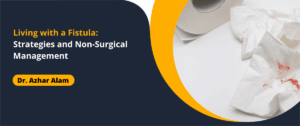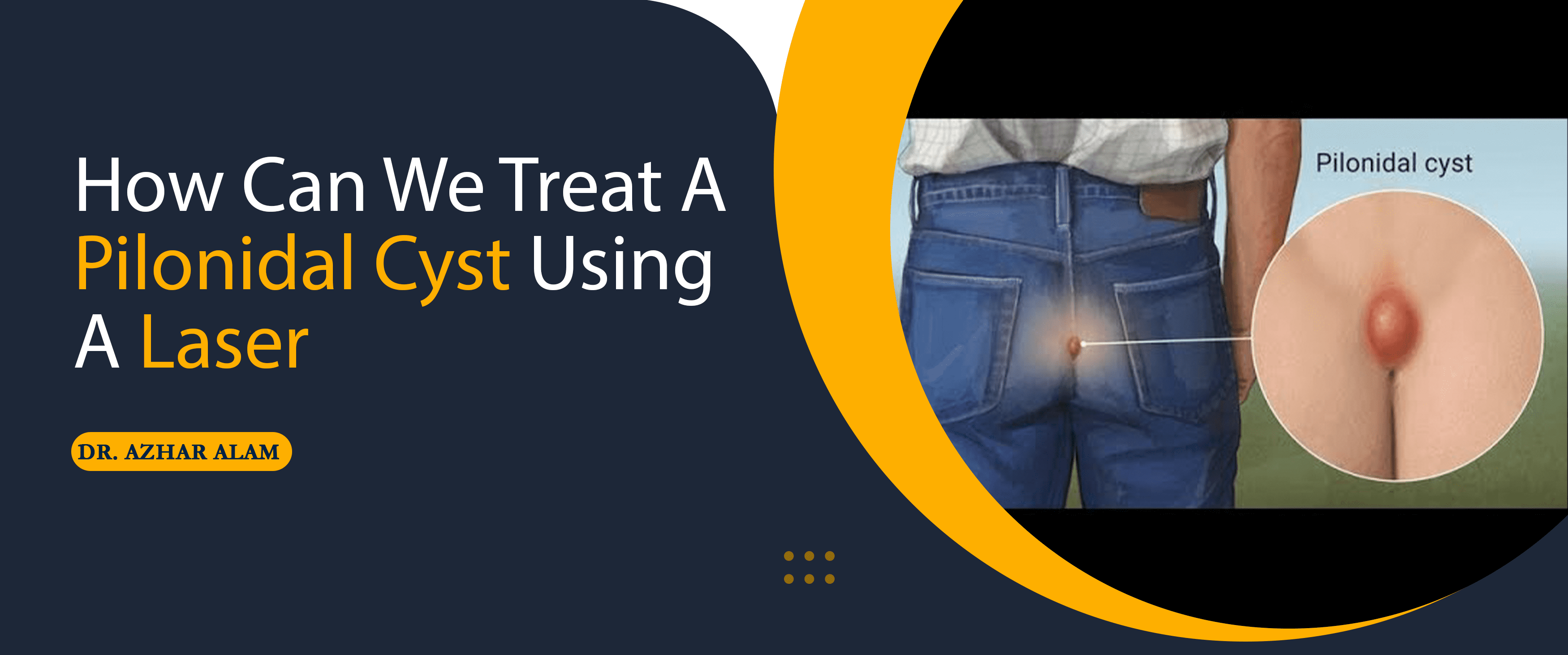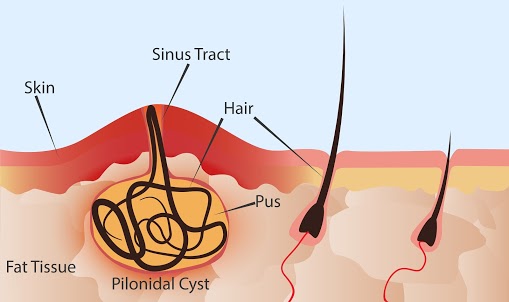

How can we treat a Pilonidal Cyst using a Laser?
Pilonidal Cyst is a condition that can be caused by many factors and has a high incidence rate. If the best treatment is not used, the patient will have to endure the pain and discomfort again. It will also need to be treated again, mostly surgically. We have discussed How can we treat a Pilonidal Cyst using a Laser.
We know that you don’t want to have pilonidal or pilonidoplasty repeated times. It is important to choose a treatment that has a higher success rate. Laser ablation is a great option.
There are many options for treating pilonidal sinus, but the most common is laser. This minimally invasive technique is used to safely and efficiently remove the cyst. Laser pilonidoplasty is a safe and effective way to remove cysts safely and effectively.
Laser Technology Used to Treat Pilonidal Cysts?
Laser surgery, a relatively new technology, is used to treat pilonidal bladders in a minimally invasive way. A general surgeon or a surgeon who is skilled in minimally invasive procedures can perform it.
The cyst can become clogged with hair, skin debris and dust particles. Sometimes, the cyst can become infected. The surgery’s purpose is to remove the cyst and clean the sinus tract. This will prevent the condition from recurring.
There are some technical differences between laser surgery and traditional procedures. It is performed in a very similar manner to traditional procedures. It involves:
To numb your body, the anesthetist may use general, local, or spinal anesthesia. This will ensure that you are completely relaxed and don’t feel any pain during the procedure.
The cysts should be removed first with a small clamp.
With the aid of a clamp, the pit openings can be enlarged and the sinus tracts are examined using a metal probe.
Each sinus opening should be identified and properly cleaned if there are more than one.
Laser probe is used to treat the sinus tract. The probe is then inserted into the sinus tract and activated. The probe is activated by passing 10-13 Watts of energy. It is then withdrawn at 1 mm per sec.
The laser removes the tract and closes it without incisions.
*If the laser does not close immediately after the initial insertion and withdrawal, it can be repeated to treat the condition permanently.
This is how laser technology can be used to safely and effectively treat pilonidal bladders.
Laser Pilonidal Sinus Treatment Is a Better Choice Than Traditional Procedures

The following are the benefits of laser pilonidal Sin Surgery.
Daycare Procedure
Laser pilonidoplasty can be done as an outpatient procedure. You don’t have to stay at the hospital for more than 24 hours, unlike open surgery which requires you to stay for at most 1-2 days.
Minimally Invasive Surgery
Laser surgery does not require incisions. There are no stitches required and there will be no scarring. Open surgery, however, doesn’t offer such perks. It involves incisions and stitches as well as scarring.
Minimal Pain & Blood loss
You won’t feel any pain because the surgery is done under anesthesia. The discomfort and pain caused by the pilonidal carcinoma will disappear once the surgery has been completed. The pain experienced during recovery will be also minimal.
Surgery is performed without incisions, so that only a small amount of blood loss occurs. Only when the cyst has been drained and cleaned does bleeding occur.
Open surgery is more painful than this. The incisions can cause excessive bleeding and sometimes the doctor may prescribe pain medication.
Low-Risk & Complexities
Because it is minimally invasive, laser pilonidal nasal surgery presents fewer complications and risks. External contaminants won’t cause damage to the internal organs. The cyst can be removed without the need for incisions. The laser can also be used to safely ablate the sinus tract. There are very few complications and infections after surgery.
Faster Recovery
It is obvious that there will be no scarring from the surgery. This means that it will take you less time to return to your normal activities. After laser pilonidal bladder treatment, it will take approximately 1-2 weeks for your wounds to heal fully. Open surgery will require more time and you may have to restrict your diet and activities.
Higher Success rate
Laser pilonidal treatment for sinuses is a minimally invasive procedure with a 90% success rate. It is also performed by specially trained doctors. The surgery will be performed with precision and safety.
The chances of the pilonidal bladder recurring after treatment with laser technology are negligible. These benefits will be discussed by your doctor during your initial consultation. Then, you can proceed to the treatment as quickly and easily as possible.
Get the Best Pilonidal Sinus Doctors of India
Dr. Azhar Alam, one of India’s top-rated healthcare providers, offers pilonidal Sinus Treatment in Kolkata. We will provide the best medical services possible without any compromise. Our surgeons are the best in each city and all specialize in laser-assisted surgery. Get the Best Pilonidal Doctor in Kolkata.
They can help you learn about all the treatment options available and their benefits by scheduling an appointment. You will be able make informed decisions and choose the best treatment option for you.
About Docor

Dr. Azhar Alam
MBBS (Honours), MRCS A (UK),
DNB General Surgery
FIAGES (Gastro Intestinal Surgery)
FMAS (Minimal Access Surgery),
MNAMS (New Delhi)
Consultant Gastrointestinal, Advanced Laparoscopic and Laser Surgeon
Assistant Professor of Surgery, KPC Medical College and Hospital




